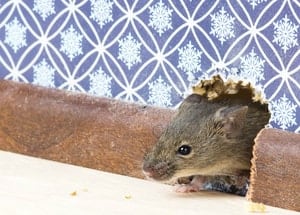Mice are known for their stealth presence inside the house. While most pests are easily noticeable, these critters prefer to stay away from the human eye and creep out only when there are no witnesses around. But are they so dangerous that it’s vital to get rid of them? Well, yes. And there is more to it than just mild annoyance.
The impending threat of having the critters inside the house is followed by the necessity of knowing how to get rid of mice. You can, of course, call professionals. But why spend money on something that you can do yourself?

Mice Infestation 101: What to Know Before Extermination
Before learning how to get rid of mice in the house, it’s essential to get to know the enemy first. Although people tend to generalize the rodent, assigning the same name to different species, there are quite a few mice that may infest a house. Knowing the differences and habits of such species can play a crucial part in the overall extermination process.
The same applies to various other factors, like identification, dangers, and the best treatments. To have a thorough understanding of the problem, let’s take a look at these details and determine the best way to handle the pests. Shall we?
Quick mice identification
It’s hard to confuse a mouse when you see it. Yes, we are used to an image made up by the common pop culture, which is drastically different from reality, but the common rodent still possesses similar features. These features vary from species to species, but one thing remains certain – mice are annoying.
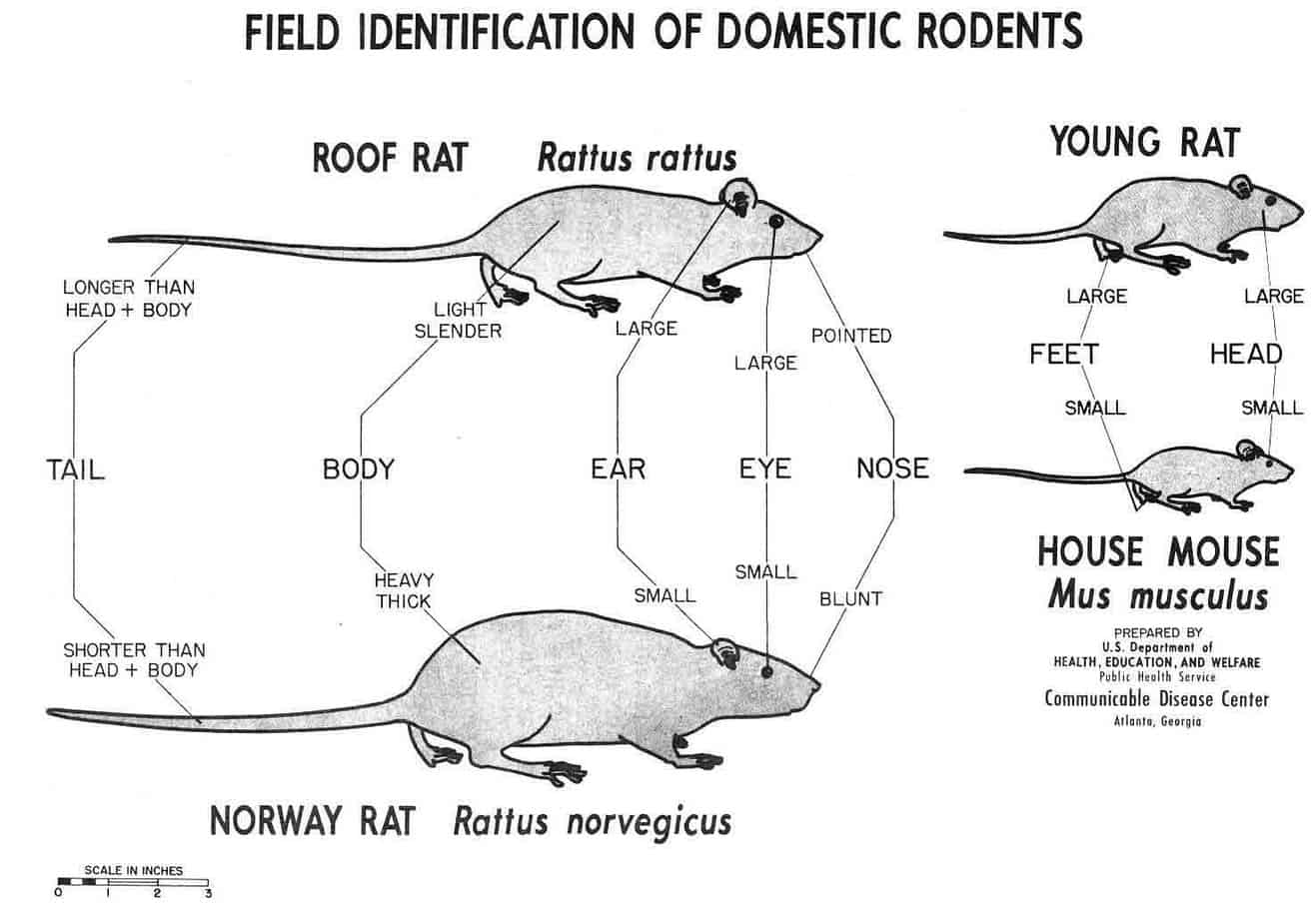
Normally, you will see a small, furry rodent with a long tail and two long rounded ears. The average rodent ranges from 2.5 inches to 3.5 inches in length, which is a relatively compact length. It allows the animal to get through a door and furniture cracks and holes easily and unnoticeably.
As for the coloring, the pest is generally gray or brown-colored. It’s extremely rare to see a house critter that has white fur, which is common for lab mice. The lab species is specifically designed to be white to facilitate experimenting, while its in-house relative is gray or brown. Besides, their bellies are fairer than the rest of the body due to constant movement and friction.
If you look at a mouse’s muzzle, you will notice that the nose and mouth are pointy. With two sharp teeth on each side, the mouth facilitates digging into and gnawing from hard-to-reach areas. The same applies to the paws that have four elongated fingers with claws, which closely reminds a human hand.
Interestingly, a majority of people often know so little about rats and mice. First of all, a rat doesn’t live inside a house. The animal prefers to inhabit dark, moist areas, where sunlight and human presence is almost completely absent. Second, a rat is much bigger than a mouse.
Normally, it’s 2-3 times larger than a house mouse and has a long black or brown tail, which comes to half the rat’s body length.
Common mice species
Considering only North America, there are a few common types of pests. The main distinction among the species is the habitat, which ranges from a house to a barn or even the woods. Here are a few species you may occasionally encounter:
House mouse

Tending not to hibernate throughout the year, the animals live, feed, and breed yearly without stopping. With a weight of around 5 ounces, the mouse lives for about a year and leaves 1-2 sets of progeny in a lifespan. As for behavior, a house mouse is extremely curious, meaning that it will mostly appear when there is clutter or noise to investigate.
White-footed mouse
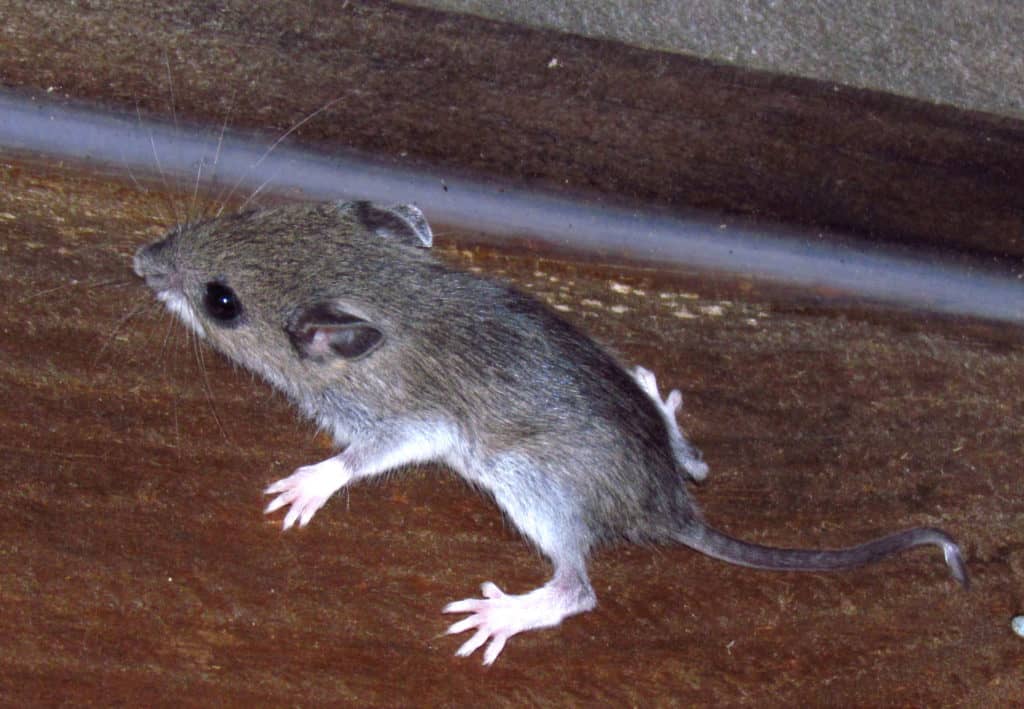
Unlike the previous species, this one doesn’t like any noise. They prefer to inhabit warm, narrow burrows or small, enclosed areas in the garage, barn, and so on. With the weight of less than that of a house mouse, the critter has pads on its feet that allow for climbing and jumping.
Western harvest mouse
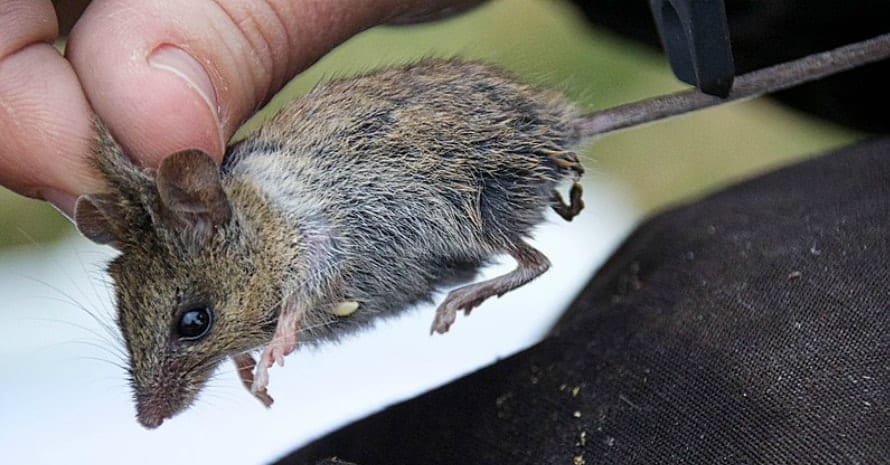
Preferring heat and humidity, the species is normally found in the South and South-West of the US. To identify it, it’s enough to take a look at its coat, which is yellowish and fair brown because of the mouse’s habitat. It likes to hibernate for a short time during the winter but stays rather active throughout the rest of the year.
What attracts mice
Just like with most pests, mice have only a couple of welcoming things they are always in search of. To find a nice place to nest and breed, they look for areas that can provide them with the most basic yet rather essential conditions, which complicates mice removal. What a mouse needs is:
Food
The first and most important thing for a critter to settle down anywhere is to find a sufficient nutrition source. Interestingly, mice aren’t picky and easily adapt to whatever conditions they encounter. Ranging from well-cooked meals to leftovers, and even crumbs, the rodent won’t take anything for granted but take the best out of it.

Even though the pests can eat basically everything and don’t have a specific diet, they prefer grains and wheat. Wheat, barley, serials, and so on are a perfect match for their nutrition. Even if such resources are limited, they will live on a bare minimum and still be active.
Warmth
Because their fur isn’t thick enough to hold a favorable body temperature when it gets cold, the pests love to cozy up to a place with heating. Such areas normally include furniture corners, baseboards, wall cracks, and so on. These places allow the animals to live through the colder seasons and have safe gestation periods.
Another location a mouse might choose for its nest is a closet. Surrounded by fabrics and clothing, the animals have no difficulty settling down. Also, it can provide them with nutrition in case of food shortages in the winter.
Noise
Seemingly quiet, mice do love hustle and bustle regardless of its source. That’s why getting rid of mice is so complicated, i.e., they are difficult to scare. For instance, a house mouse, which is a nocturnal animal, may come out to look around if you have an apartment renovation going on.
The same applies to storage areas and barns. There, the rodents find shelter and favorable conditions, as well as can have a good overview of what is happening around. Especially if you have cardboard boxes or synthetic sacks, mice can find it amusing to cause noise by themselves, thus staying there for longer.
Mice dangers
If you’re still considering keeping a mouse as a pet, then you are probably ignorant of what comes with the pest. Of course, having a mouse doesn’t cause too much trouble in the house at first, but there are certain aftermaths. They can endanger not only your household but also your health and your family’s wellbeing. Here is what can follow finding a rodent on your property:
Disease
Salmonellosis and listeria are only the top of the mouse iceberg of the diseases directly transmitted by rodents. The illnesses can affect your digestion and nervous system, as well as cause fever and even death. Spread easily through contact, other infectious diseases worsen a person’s health, resulting in threatening health conditions.
A mouse doesn’t have to bite you to infect you with an illness. What poses a real danger is the urine and feces left after a mouse’s feeding. The particles can get into food or be transmitted through water and air, getting into a person’s body.
Breeding
It’s estimated that a single mouse can produce from 6 to 10 litters annually. Each litter consists of 7-8 mice, which amounts to 50-70 new mice running around your house yearly. While mice extermination of a single animal is tough, can you imagine the trouble coming from 50 little mice?
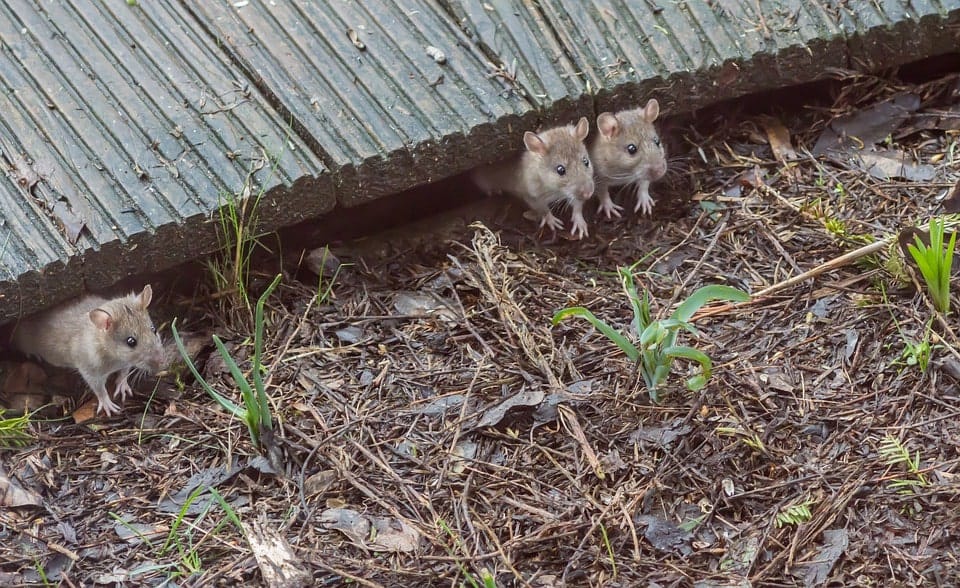
Destruction
Following their omnivorous diet, the rodents can gnaw anything. Food or fabrics, wood or plastic, they find a source of nutrition in everything they see on their way. This can cause a lot of trouble for people inside the house since the critters eat around 15 times a day.
With a population of 50 babies, they will obliterate the furniture, upholstery, and flooring within a season. While scavenging your property for food and nests, they will contaminate every single spot with urine and feces, spreading diseases and wreaking havoc.
Swiftness
If you already realize how dangerous mice are, you should always know that dealing with mice doesn’t come easily. Since the critter is extremely small and can overcome long distances at high speed, catching or killing it takes time and money. They can jump onto the furniture, climb curtains, and dash under cupboards if they sense any danger. This way, your extermination may last for weeks if not months.
Mice infestation signs
There are a couple of things that can signal you about an upcoming mice infestation. In case you notice two or three of them inside your household, I would highly recommend you to take it seriously from now on. Consider pest control if you encounter:
Feces
Round brown leftovers that resemble little marbles are called droppings. They are a product of the rodent’s digestion and should be an alarming sign for you. Normally, they are deposited after a mouse has finished eating and can be found in a cupboard, near baseboards, and close to a food source. Avoid touching them but utilize cleaning supplies to disinfect the area.
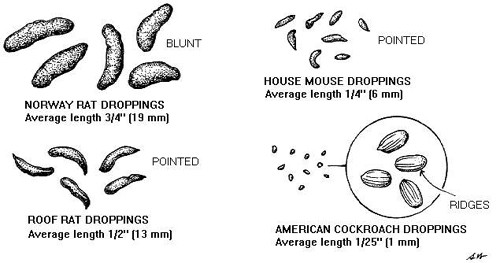
Noise
If you wake up at night, hearing something crawl inside the walls or in the attic, that should be it. Mice do get extremely active at night when everybody is asleep. They come out to find food and move a little to determine new breeding locations.
Tears and rips
Mice’s sharp teeth allow the rodents to gnaw through basically anything. If you have noticed bites on your cereal box or torn tea bags, you have got yourself another sign of an infestation.
[su_note note_color=”#e5e2d4″]Related post: Related Post: Best Rat Poisons Reviewed [/su_note]
How to Get Rid of Mice: Easy Extermination Guide
When dealing with critters, the best favor you can do for yourself is to approach the issues with responsibility. You need to conduct a thorough mice treatment procedure from securing the house to utilizing professional mice-killing treatments.
The process may take a while, but later it will prove most useful against the pest. Follow my step-by-step guide on how to kill mice in the house to save your property.
Step 1: Eliminate entry points
The biggest problem with these critters is that they are too minute to handle on the spot. Not only can they run extremely fast and dash your hits, but they also get into cracks, holes, and other narrow places. Completely evasive and with high resistance to catching, they can breed and prosper indefinitely in your household.
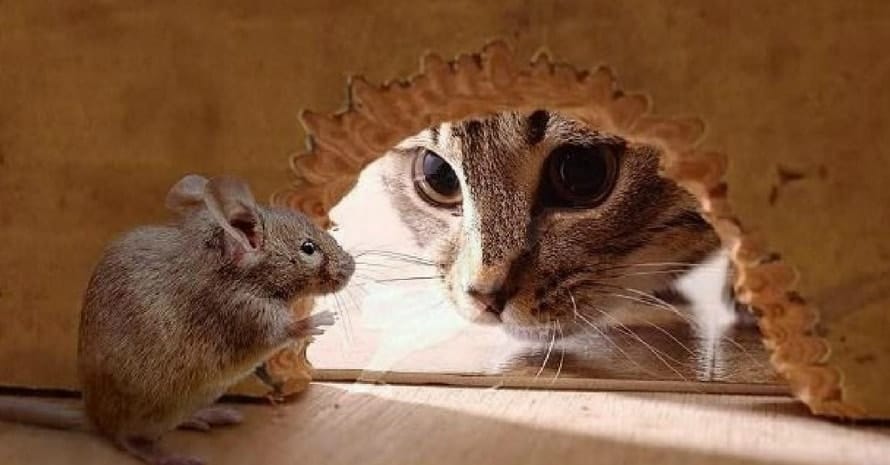
Before gearing up to eliminate mice, it’s essential to prevent them from escaping and/or getting back inside the house. Here, you have to determine all the weak spots your property has, e.g., ventilation, wall holes, tubing, defective flooring, etc. All of them, regardless of how small they may seem, can be an invitation for a mouse to come about.
As it goes, such entry points are located either in the basement or in the attic. Providing the most warmth and comfort, and isolated from any disturbances, the areas are a match for nesting. You need to examine the corners and tubing around a boiler (if you have one). It emits a lot of heat and dehydrates the air, which is perfect for gestation.
Besides, such areas, like window cracks and holes in the walls can ensure a handy route for mice. If you think that they can be stopped by insulation, then you should consider the fact that a single mouse’s teeth are so sharp that they can gnaw on concrete and soft metals.
Step 2: Set traps next to the entry points
Despite the common disbelief, mouse traps are still one of the most effective ways to get rid of a mouse. They are designed to be a fast-reaction treatment that, once activated, doesn’t leave a critter a chance to survive.
However, old-school traps with a piece of cheese in them aren’t always as effective as they are described. Made of metal susceptible to corrosion, their activation can be a little sluggish.
Luckily, there is a great variety of trapping products that guarantee effectiveness within any time frame. Place the treatments near the determined entry points where a mouse is likely to show up next time. If you don’t want to kill rodents, you can use humane mouse traps to relocate mice away from your home.
Also, it’s a good idea to put a few in other places, like the basement, attic, and garage. This will prevent the rodents from spreading and populating your property since their travel route becomes limited.
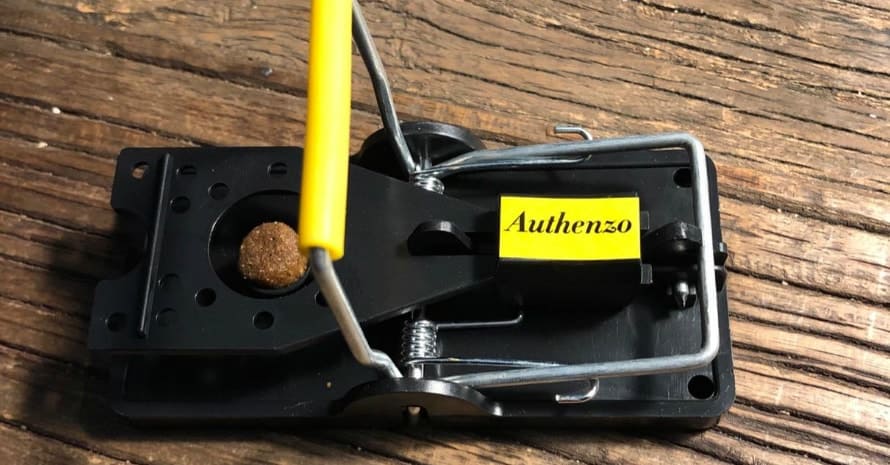
Besides the traps, you might also want to add an attractant. Forget the outdated misconception that the pests roll their eyes in delight when they see a piece of cheese. Mice can eat anything, especially if it’s sweet and smells good.
Pet fodder, peanut butter, and, of course, fresh cheese are extremely scrumptious for the critters. Also, you can include some professional mice attractants, i.e., gels to increase your chances of catching a mouse. They are not too expensive but guarantee great results.
Step 3: Place poison baits in your basement, attic, and outside
Having a single mouse sprinting around your kitchen is one thing, but if there is a swarm of them, you have to take measures. Using mouse poison and poison baits is a proven method of eliminating infectious rodents without too much difficulty. Of course, if you want to spare their lives, you may do so. But don’t forget that the pests multiply by 50-60 litters a year, so you have to be wary of the threat.
The best way to get rid of mice is to combine a trap and poison. When you are placing a trap beside a nest, you need to add some poison to your current bait or apply bait poison. Upon eating it, a mouse will surely go down within hours, spreading the substances among its kinship.
On the other hand, it’s also useful to place some on the critter’s route from the nest. Use it behind the cupboards, furniture, and sofas. You may not have seen a rodent around your living room area, but it, obviously, doesn’t mean it has not been there before. Combine the poison with food, like chocolate, grains, nuts, etc. This will hide the hazardous smell of the substance and prevent a mouse from distinguishing food from a catch.
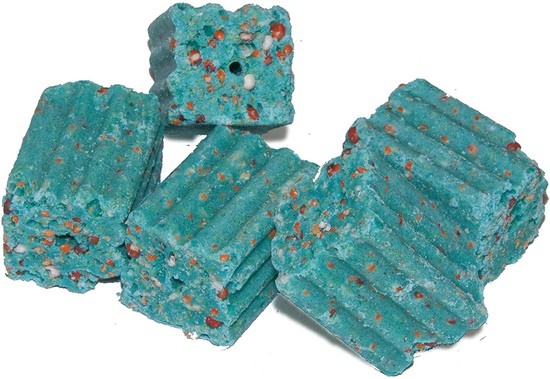
To ensure that the bait is well-fixed and a critter won’t snatch it and flee, you can lace it lightly with a thread or dental floss. Also, you can be a little creative and use glue to stick the food to the trap for good. It won’t matter in the long run since you are going to get rid of the trap with a mouse in it.
Step 4: Clean the house and eliminate a food source
A well-cleaned house won’t drive mice away, but it will surely seem welcoming to them if it’s dirty and untidy. The critter doesn’t need much food nibbling only up to 5g of fodder a day, but it will find a source wherever it is. Keeping up with your in-house order, cleaning crumbs from the floor, and utilizing outdated food can help you create unfavorable conditions for the rodents.

Sweep the floors regularly, cleaning food leftovers and crumbs. Wash up the dishes to prevent whiffs of food and food leftovers. To prevent food contamination and devastation, you should store everything in hard-to-reach places. Wrap food in airtight plastic bags or put it in glass jars and containers.
Maintaining outside-the-house areas is also important. If you have timber, wood logs, or hay, you need to either keep it in an enclosed area or get rid of it. These materials are extremely attractive to the critters as they provide not only a food source but also a warm nesting place.
Just like rats, mice like to scavenge trash bins. Seal your garbage hermetically and make sure there is no trash around. Take out the trash regularly and don’t store any grains or cardboards in the garage as they can also become a treat for the rodents.
Step 5: Seal the house
When entry points are clear, it’s time to seal or block them. You can use a whole array of materials as long as the mice don’t eat them. Use a sealant for window ledges and cracks or apply it to wall deficiencies and holes. The material is not edible even for mice, which prevents them from gnawing on the sealed places.
If you are not sure if a hole is worth sealing, then take a pen and put it through. If it fits, so will a mouse without too much difficulty.

[su_note note_color=”#e5e2d4″]Related post: Related Post: Fresh Cab Rodent Repellent Review [/su_note]
To deal with wood and fabric deficiencies, you can utilize steel wool or cotton insulation. They provide a smooth and attractive disguise for holes and cracks while being dangerous for mice. But be careful with cotton insulation mending since it can be dangerous for your skin and eyes as well.
You should also look for gaps and spaces in thresholds and doorposts. Using a sealant will help you deal with the gaps, but make sure to choose the material wisely. Don’t utilize rubber or soft plastic since they are a piece of cake for a mouse’s razor-sharp teeth.
Top 4 Best Mice Treatments: Fast and Easy Ways of Eradication
In case you are following my mouse control tips, you must be searching for high-quality anti-mice treatments. I know how flabbergasting browsing on the Internet can be, and determining which product you need is an exhausting process. Therefore, in this section, I would like to recommend a couple of products that I know work for sure.
Each of them is efficient and effective at what it’s designed to do. Using some or all of them will help you conduct thorough mice control without endangering yourself or your pets. Make sure to pay attention to the Pros & Cons paragraph to determine its benefits.
1. Authenzo Mouse Trax SX-5006 6 Pack — Best Mice Removal Trap
[amazon box=”B07HQMLHCL” template=”vertical” tracking_id=”how-to-get-rid-of-mice-20″]
A mousetrap has to be sturdy and lightning-fast to catch a critter on the spot, and that’s what the Authenzo product is about. It’s made for multiple uses and doesn’t break or get stuck after the first use to ensure an effective catch every single time. The manufacturer provides 6 of them in a package, which is more than enough to secure the most vulnerable places in the house.
With a length of about 4 inches, it’s a perfect fit for small areas to get rid of mice in the attic, garage, or under the bed. The catching clip is made of stainless steel to prevent corrosion and biting. Moreover, it’s extremely easy to set up and has a designated bait place for comfort.
| Pros: | Cons: |
|
|
2. Farnam Just One Bite Bait Chunks — Best Mice Infestation Poison Bait
[amazon box=”B005WKE2HA” template=”vertical” tracking_id=”how-to-get-rid-of-mice-20″ button_text=”Check price on Amazon”]
Specifications:
- Active Ingredients: Bromethalin 0.01%
- Item Form: Bite, Chunks
- Item Weight: 10.56 Ounces
- Item Dimensions LxWxH: 19 x 16 x 9 inches
- Target Species: Norway Rats, Roof Rats, Cotton Rats, Polynesian Rats, House Mice, Eastern Harvest Mice, Golden Mice, Meadow Voles
Created for prompt mice infestation elimination, the chunks are superb at handling large and young critters. The poison is extremely volatile and used in large commercial buildings; however, it’s also suitable when you want to get rid of mice inside the house. A single dose can eradicate 2-3 large mice within a few days.
The container has a total of 8 pounds, which is sufficient for treating a medium-sized property. With Bromadiolone as an active ingredient, the treatment has a 100% lethality rate if it has been consumed in a sufficient amount. The chunks are perfect for crevices and holes, where mice usually reside.
| Pros: | Cons: |
|
|
3. BRISON Ultrasonic Eco-Friendly Pest Repellent — Sly Indoor Mice Treatment
[amazon box=”B0843T451L” template=”vertical” tracking_id=”pa-brison-b0843t451l-20″]
Using the BRISON ultrasonic repellent is a comfortable and effortless way of deterring rats and other rodents inside the house. It’s designed for safety both for the user and the environment, emitting no chemicals or polluting the area. It’s perfectly suitable for minor and medium infestation and has nice coverage.
[su_youtube url=”https://youtu.be/hvxn6QLs6MU”]
The device is plugged into a power source, preferably close to the floor, and needs no batteries. Within three weeks, the area becomes completely hostile to rodents, roaches, and insects. Also, it has an in-built night light for the comfort of use.
| Pros: | Cons: |
|
|
4. Mighty Mint Peppermint Oil Rodent Spray — Harmless Treatment for Dealing with Mice
[amazon box=”B07HYP6D5C” template=”vertical” tracking_id=”how-to-get-rid-of-mice-20″ button_text=”Check price on Amazon”]
Specifications:
- Active Ingredient: Pure Origin Peppermint Essential Oil
- Item Form: Spray
- Package Weight: 1 Pounds
- Package Dimensions LxWxH: 10.51 x 3.82 x 3.7 inches
- Target Species: Rodents

The spray is a harmless yet effective product for preventative mice treatment where there is a chance of a rodent infestation. Unlike similar sprays, this one has a high concentration of mint oils with the bare minimum of dilution. Besides, it can be applied not only in the house but also in a vehicle or even to plants.
Simply spray the product where a nest is/could be located and leave it to dry. The residue will remain highly active for weeks, driving critters away. Don’t worry about the product safety compliance; it’s fully certified and doesn’t include any toxins.
| Pros: | Cons: |
|
|
How to Prevent Mice
There are two ways of preventing the critter on your property, i.e., naturally and professionally. Some people prefer to take the natural approach, using ammonia and kitten litter around the house. It provides a sufficient stench reminiscent of cats and larger predators that sometimes causes mice to flee. While some are content with such a means, I prefer professional preventative treatments.
The most common mice repellent you can acquire is a spray made up of natural essences and oils. Peppermint, eucalyptus, and some other plants are repulsive to rodents. You need to spray an infested area and leave the substance to dry.
The residue is harmless to humans but drives the pests away effectively. If you like devices, then I can also recommend that you purchase an ultrasonic repellent.
Noise-free and odorless, the utilities deter mice using high-pitch sounds, protecting the whole house. You simply plug in one of them in an infested area, and the product will do its job. Also, it’s effective against crawling pests, like roaches and spiders, so the results won’t make you wait.
[su_note note_color=”#e5e2d4″]Related post: Related Post: Best Air Rifles for Pest Control [/su_note]
FAQ on Mice Removal
Do you have some more questions about mice and their treatment left? Take a look here!
How long do mice live?
Depending on the species, the average mouse’s lifespan is around one year. However, some species live up to three years though they aren’t common for the house.
What smells do mice hate?
Natural oils, like mint and eucalyptus, are extremely deterring for the rodents. Also, they avoid the smell of cat litter and ammonia since it alarms them about the danger.
Can mice live in walls?
Yes, they can. By grinding through insulation and beams, the critters can settle down behind the walls where they find comfort and warmth.
How many mice are in my house?
It can be hard to tell, as it depends on the time they have spent inside the house. On average, a single mouse can gestate around 50 litters each year.

Mice Aren’t Your Housemates but a Threat to Get Rid Of
Rodent infestations are a real issue that emerges from nowhere and isn’t likely to resolve itself. Mice like to settle down in warm, dry locations where they have a constant nutrition source to nibble on. If you have found one in your house, make sure to use a repellent to prevent an infestation. Also, utilize electric mouse traps and poisons if you observe the situation worsen.
Anyway, thank you for reading the article; I hope you have found it useful. What kind of treatments have you applied before? What’s your opinion on ultrasonic repellents? Let me know what you think below!
References:
- About Rats and Mice (U.S. Environmental Protection Agency):
https://www.epa.gov/rodenticides/about-rats-and-mice - House Mouse—Mus musculus (University of Maryland Cooperative Extension):
https://www.maine.gov/dacf/php/gotpests/othercritters/mice.htm - Diseases directly transmitted by rodents (Centers for Disease Control and Prevention):
https://www.cdc.gov/rodents/diseases/direct.html

